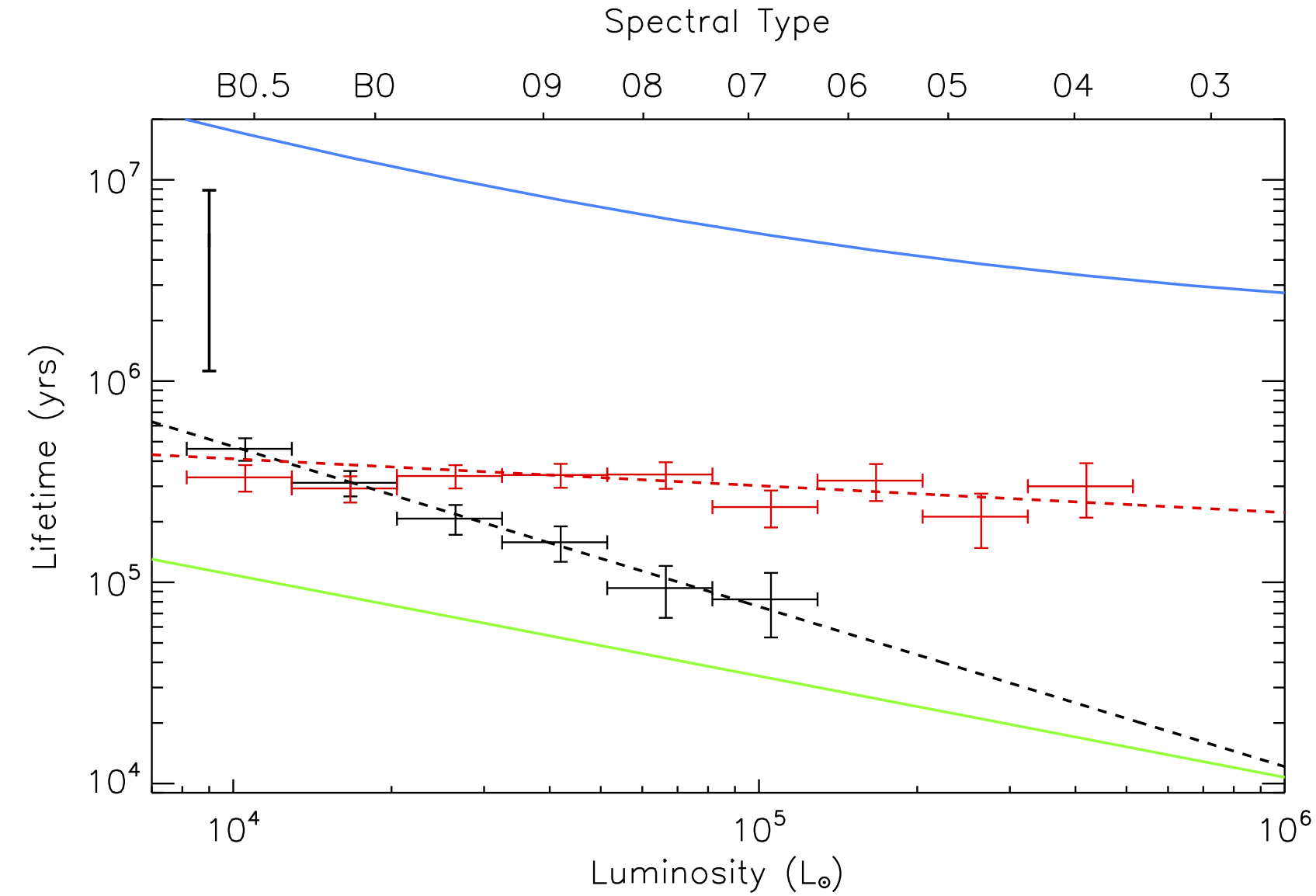
My ResearchI use both ground and space-based facilities, along with simple parameterised and/or radiative transfer models, to study the formation and evolution of stars and the molecular clouds they form from on scales ranging from the whole Milky Way Galaxy down to individual protostars. I am also beginning to expand this to study our Galaxy in the same way as the extragalactic community studies other galaxies. Water in Star-forming regions with HerschelWater is a key ingredient in life and is also important astrophysically. It is a major reservoir for oxygen in the interstellar medium and is an important part of the formation of more complex molecules as it is frozen onto dust grains in the cold temperatures inside molecular clouds. Furthermore, water is an excellent tracer of motion, both in outflows and the infalling protostellar envelope. Unfortunately, most water transitions are unobservable from the ground due to absorption by water in out atmosphere, so space satellites, such as Herschel are required. In the Water in Star-froming regions with Herschel (WISH) survey we are using Herschel spectroscopic observations to study water in a range of star-forming environments. 
In particular I have used radiative transfer models to constrain the infall of material in the protostellar envelopes of 7 low-mass protostars which show inverse P-Cygni line profiles similar to the cartoon line profile shown to the right. The colours of the cartoon represent the doppler-shift induced by the motion of the material in the envelope and outflow around the protostar. The envelope material between us and the protostar falls away from us and so is redshifted while the material on the far side falls towards us and so is blueshifted. Emission from the redshifted material is close to the velocity of surrounding layers and so is absorbed. The red dashed line indicates total absorption while the black line shows what happens when there is enough material to absorb all photons. The broader gaussian emission is due to the outflow. This has allowed us to constrain the mass infall rate in 5 protostars, which for one source is so large that it suggests the central regions near the forming star will be gravitationally unstable. For more details, see Mottram et al., 2013. I'm currently working on exploring the excitation of water in the whole sample of WISH low-mass protostars and what that can tell us about the physical conditions in outflows. Exeter-FCRAO Galactic Plane SurveyAlong with Chris Brunt, I am working on FCRAO 12CO and 13CO (J=1-0) observations of the northern galactic plane from l=55º to 193º. We hope to release the data in the near future, after which I'll add some pictures here. I'm currently working on a paper presenting our stray-radiation correction along with integrated and column density maps for the whole northern Galactic Plane. Red MSX Source SurveyWhen studying the formation of massive stars it is important to have large well-selected samples of sources at the different evolutionary phases. This allows their geeneral properties to be studied without bias while having enough sources to select sub-samples. The Red MSX Source Survey is a systematic search for massive (M>8Msolar) young stellar objects (MYSOs), which are nearing their final luminosity but have yet to begin forming an HII region around them, throughout the galactic plane. We colour-selected ~2000 candidates from the mid-infrared MSX point source catalogue, and have then followed up these sources with a range of ground and space-based studies from near-infrared to radio wavelengths in order to identify contaminants and and gain information about them. 
One main result from my work, shown in the plot to the right, was calculating the timescales associated with the MYSO (black in plot) and Ultra-Compact/Compact HII (red) region phases of massive star formation for the first time. The blue line indicates the main-sequence lifetime and the green the Kelvin-Helmhotz lifetime. For more details, see Mottram et al., 2011b Herschel and SCUBA2I am a member of the Herschel Galactic Plane Servey (Hi-GAL) which aims to study the condensations of dust which are forming or will go on to form stars and stellar clusters. Within this I am currently working on a study of the far-IR properties of RMS sources detected by Hershel. I am also a member of a number of other surveys, including the JCMT Gould Belt Survey and the JCMT Galactic Plane Survey. |